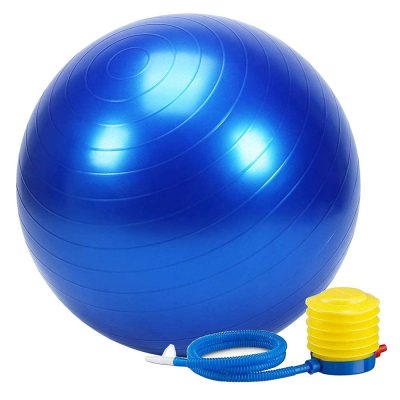Project Report For Swiss Ball
Introduction
Project Report For Swiss Ball is as follows.
Swiss balls are a popular and versatile piece of fitness equipment that can be found in gyms, homes, physical therapy sessions, and even the workplace. The stability ball, also known as exercise balls, Swiss balls, Physio balls, and balance balls, is used to improve balance, muscle tone, and core strength.
Swiss balls are large exercise balls that range in size from 18 to 30 inches (45 to 75 cm). They are extremely durable and can support the weight of most average-sized adults, and can typically support more than 200 pounds. Swiss balls are popular because they are inexpensive, safe, and easy to use, and they provide a variety of exercises. To complete a full workout, the Swiss ball can be combined with many existing exercises and weight lifting practises, as well as a variety of new exercises developed for the ball.
Inflatable Swiss balls are normally filled between 80 and 90 percent. The ball comes in a variety of sizes and is made from a thick rubberized composite. A Swiss ball should be placed roughly 2 inches (5 cm) above the user’s knee for best results.
The Swiss ball enables a variety of workouts based on the user’s capacity to move with the motion of the ball while engaging in the exercise, using the ball to support the body during the movement and to provide a little amount of resistance to the muscles used in the action. The groyne and the lower back stabilisers, the oblique muscles that run parallel to the spine above the pelvis, respond in kind to the basic Swiss ball workouts that target the abdominal muscles.
When performing crunches, which involve bringing the upper thighs and sternum (breastbone) towards one another to strengthen the abdominals, twisting crunches, where the upper body twists in opposite directions during the crunch to extend the muscular effect across the abdomen, and flexion of the thoracic spine, where the mid-back thoracic vertebrae are bent, the athlete can move the abdominals through their full range of motion.

Benefits of Swiss Ball
- Flexibility :- Including a swiss ball in your workout routine can help you improve your flexibility. The swiss ball can help keep your muscles and joints functional, which can help prevent injury, whether it’s for a quick pre-workout warm-up or post-workout stretch-down.
- Balance :- The abdominal and back muscles, which are crucial stabilisers, are worked out when one is sitting alone on a swiss ball. Due to the fact that it pushes you to steady yourself and maintain your own weight, a swiss ball can aid in balancing out any imbalances in your core or surrounding muscles. Because your core is stronger and more stable the more balanced and rounded it is, these improvements can also help you prevent future injuries.
- Versatility :- The great thing about swiss balls, and possibly THE BEST thing about them, is their versatility. It’s just a ball that you blow up. Not only are they convenient, but they can also be incorporated into a variety of different exercise disciplines, whether as an important workout tool to base your routine around, or just something you bring in now and then to work something a little differently.
Get Completely Custom Bankable Project Report
Market Potential for Swiss Ball
The size of the global fitness ball market, which was around $307.1 million in 2021, is anticipated to increase to about $607.1 million by 2030, with an anticipated CAGR of roughly 8.1% between 2022 and 2030.
Fitness balls are more in demand now than ever before thanks to a growth in the number of gyms and fitness centres and the development of a healthy lifestyle. The key elements fueling market expansion are emerging trends among the youthful generation to become more powerful. Fitness balls can lead to improper body posture because they are not adjustable, which is limiting their use and slowing the market’s expansion.
The growth of gyms and fitness centres, as well as the development of a healthy lifestyle, has increased demand for various fitness equipment such as fitness balls. The major factors driving market growth are emerging trends among the young generation.Fitness balls can’t be adjusted, which limits their use and stifles market expansion. Poor posture can result.
The fitness ball market is expected to grow significantly in the coming years as lifestyle habits change, leading to obesity and other lifestyle diseases. Lower back pain affects 60.0%-80% of adults at some point in their lives, and its prevalence is increasing globally. Sitting in an office chair all day can be excruciatingly painful for people who have lower back pain or spinal cord disorders. The popularity of employing a stability ball or fitness ball for certain physiological workouts is rising among business settings.

